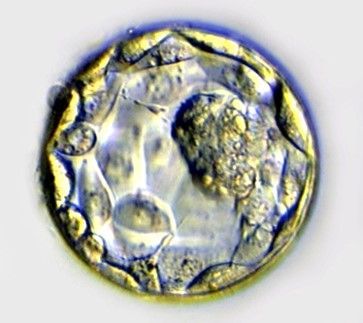Previously cryopreserved embryo(s) are thawed and transferred into the patient’s uterus at the appropriate time in her menstrual cycle. This process is called a frozen embryo transfer (FET).
A patient preparing for an FET has blood tests and ultrasound monitoring in order for the physician to identify the optimal time in the patient's cycle to transfer the embryo(s). Furthermore, some FET patients may also take hormone medication to prepare for the transfer.

Above: blastocyst prior to transfer
The FET Process
Medicated FET
In a medicated (also commonly referred to as a "programmed" FET), the patient takes a course of hormone medication that ensures that the patient's endometrium (lining of the uterus) is prepared to receive the thawed embryo(s).
Natural FET
Our Center routinely performs "natural" FETs. Natural FETs require minimal or no medication. The patient’s menstrual cycle is closely monitored by blood tests and ultrasound in order to identify the optimal day for embryo transfer.
Transfer and Post-Transfer
When the physician determines that the FET patient's endometrium is approaching its peak receptivity, the embryo transfer is scheduled.
Then, the patient's embryo(s) is thawed by Embryology Laboratory staff and transferred by the physician into the uterus. Embryo transfer is an outpatient procedure that does not typically require sedation and usually has no side effects.

